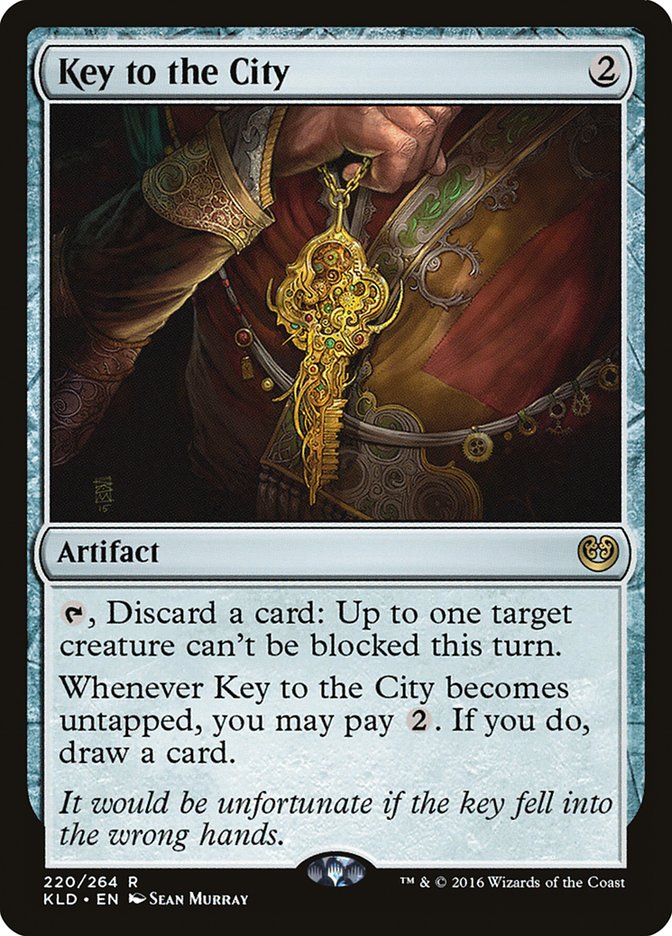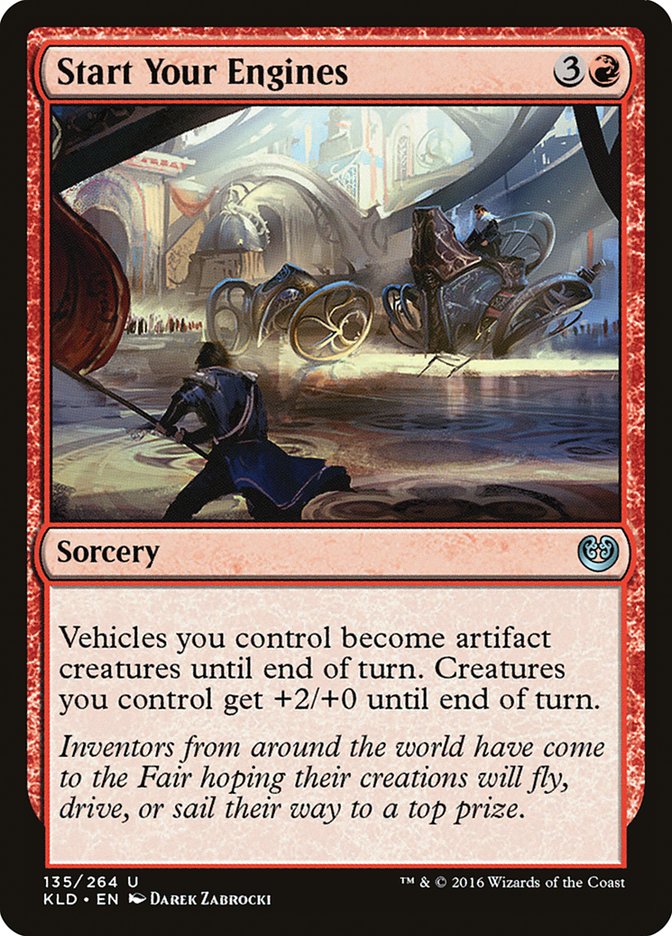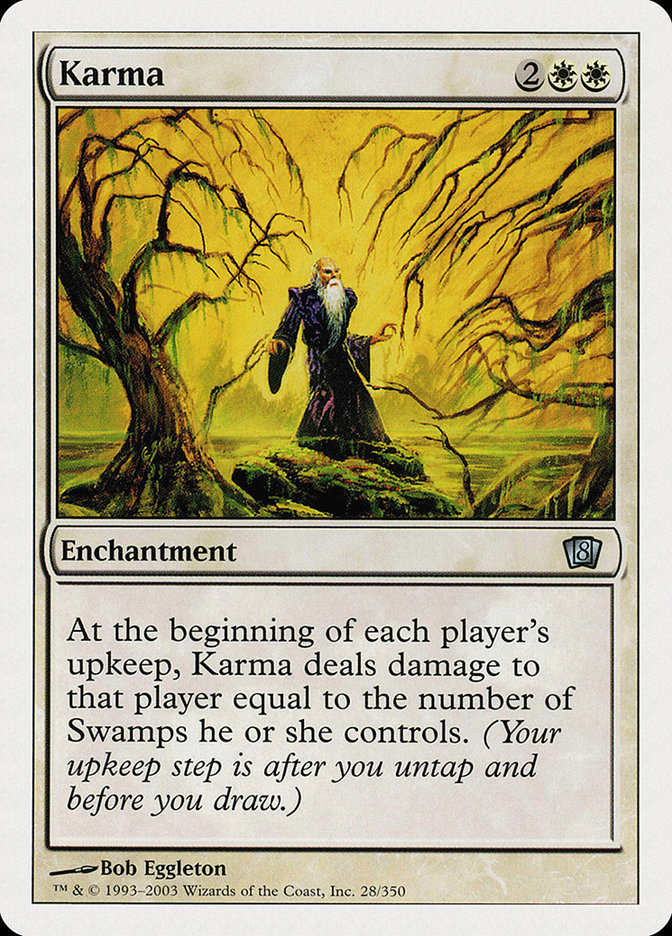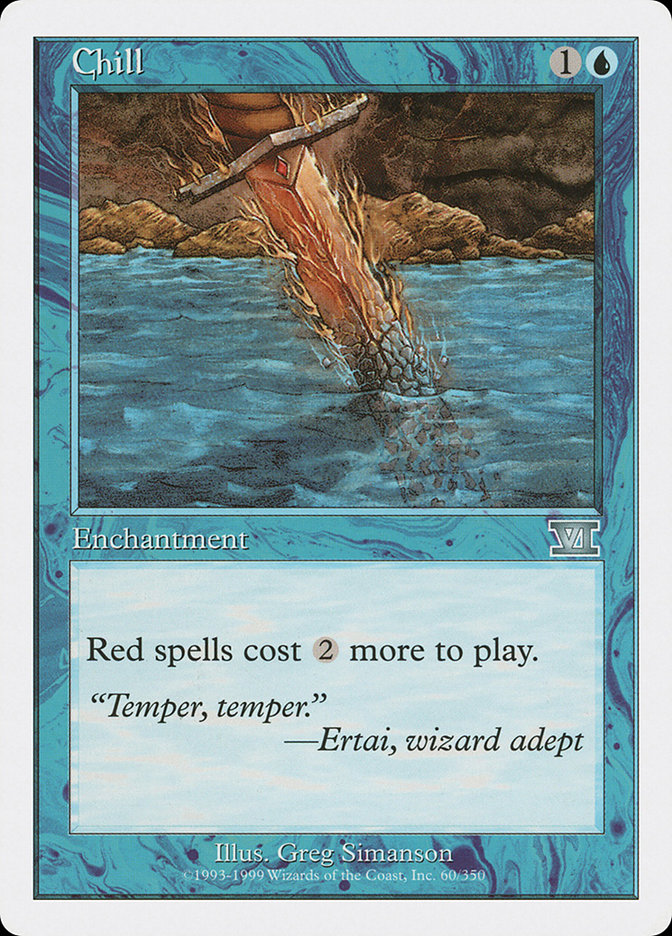With #PTKLD this weekend, we find ourselves in that several-week lull where I can no longer spill my guts on Standard. These tend to be good opportunities for me to write general self-improvement or theory articles and today I’ll be opting for the former. I’ve talked about playtesting on this website and we’ve touched quite a bit on the general mindset of a competitive Magic player on the GAM podcast, but what are some more specific skills that folks can cultivate to improve their win percentage?
Analyzing the Context of a Format
With the complete dominance of Smuggler’s Copter at #SCGINDY, I think this is a fine place to start. Many authors have discussed the impact the Copter is making and ways in which to fight it, but this in-your-face example should just be your training wheels to start looking at the trends and ways in which to exploit them in other formats.
If Smuggler’s Copter invalidates many of the sorcery-speed removal spells and eliminates the effectiveness of cards like Spell Queller or various other two-powered creatures on sizing, what can we glean from a Modern metagame where Affinity, Infect, and Burn are the top-performing decks online?
While Lightning Bolt may not have been the most attractive option two or three months ago as many players moved towards decks like Dredge, R/G Titan, and Bant Eldrazi, those three aforementioned aggressive combo decks are popping up to properly punish their presence and the lack of cheap spot removal. Decks like Jeskai Control have fallen by the wayside, but perhaps it is their time once again to shine.
I don’t want to go out of my way to highlight a snapshot of the Modern metagame. Rather, I’m trying to make a point that sometimes doing your homework is realizing where we are in a largely cyclical cycle, especially when it comes to non-rotating formats. Other times it is properly identifying the best threats (Copter) and ways in which to beat them directly while also recognizing the manner in which other people are likely to respond to them. Cards like Sylvan Advocate and Tireless Tracker look dramatically worse than they did a few short weeks ago.
Understand Your Role
I’ll start by saying that my take will be more concise than Gerry’s excellent piece, but if it is “the only skill that matters,” then I don’t feel too bad about beating my audience over the head with it. Understanding your role really does dictate the majority of your informed decision-making. Of course it is possible to simply play the most expensive or powerful card in your hand every turn and win a reasonable number of games, but almost all macro decisions (or lines, if you will) in Magic stem from picking a strategic stance in a matchup and following through. Of course, choosing the correct way to allocate your resources will result in winning a lot more games than doing it poorly or simply trying to brute-force your opponent.
In the previous Standard format, this role assessment was actually exceedingly difficult. Decks like Bant Company were oftentimes the aggressor against the majority of midrange strategies and could quickly adapt based upon the cards they drew or hit off a Collected Company. Games could be about something else completely before a Reflector Mage and Sylvan Advocate on the end step led to animating a Lumbering Falls with four powerful spells in hand to put an opponent in the life-total choke-hold.
On the other end of the spectrum, Company could also enter a mid- to late-game where they could easily out-card their “control” opponent. It isn’t my intention to simply harp on the dominance of a Standard deck past but to illustrate that sometimes formats and decks have dynamic play patterns in game. In the case of Kaladesh, I think we’ve actually reverted to a far more simplistic model where the types of games we play will be more dynamic but the roles of decks within that framework are fairly straightforward. Someone will be the aggressor and the other will try to stay alive much more than we’ve seen in the past year, and this is a breath of fresh air.
On the other hand, the presence of a critical mass of playable burn spells and Key to the City means that decks can’t simply just put a stranglehold on the battlefield like they could in the previous season against a deck like Boss Humans. It is critical to able to pick your spots to close the game against not only red decks but anything threatening to cast this innocuous two-mana artifact! This is also a reasonable segue into my next point:
Damage Racing
The idea of simply trading damage is oftentimes maligned as a Limited concept, but that couldn’t be further from the truth. There are very few times in which a deck will have ultimate inevitability. Many of these types of cards are ones which Wizards has stopped printing (Sphinx’s Revelation) and the others have both an absurd power level and are in a specific context (Emrakul, the Promised End).
As I just mentioned, with four to five highly playable burn spells backed up by Key to the City, many games of Standard are going to be about getting the game done with. This means that it is in the best interest of any deck slanted midrange to control to have high-powered hard-hitting threats that can turn the corner quickly once they have seized initiative. Despite the cries of his death by Copter, Gideon, Ally of Zendikar is still an excellent example of this.
Instead of dismissing Gideon as unplayable in the face of Dwarf-Crewed flying machines, why not find play patterns to exploit his power level again? Getting hyper-reactive in the face of these resilient aggressive cards and piles of “deal three to the face” will only lead to dying in many “close” games.
In a more specific sense, what does properly racing and not missing points of damage do in a game? Not only does it constrict draw steps, but the most underrated aspect of proper combat in Magic is that it actually denies your opponent the ability to deal you more damage in the long run. It suddenly becomes impossible to go wide against a large threat when you’re at five life. Similarly, the presence of specific cards like Elder Deep-Fiend from midrange opponents can easily punish someone who dips too low. Oftentimes, aggressive players will have to chump rather quickly, and this effectively turns a turn cycle of the “control” player who stares down a growing battlefield into a productive exchange where any additional creature’s or interaction’s effectiveness is amplified.
The old mantra is “If you aren’t blocking, you should be attacking,” but you also have to ask yourself if you’ll even have the opportunity to block these days.
Build Decks and Sideboards
I guess this is sort of a pet peeve. A few weeks ago I talked about the importance of getting your ideas on paper and trying to explore the possibilities that come from an entirely new format. Not only do I think it is fun to build decks, and I think everyone should try to tackle the set before the first SCG Tour event or Pro Tour, but I also think that it is a skill that can have tangible in-game rewards. If your opponent plays something “weird,” then it is more likely that you’ll have an idea what they are up to if you’ve done your due diligence of looking over the set and thinking about card interactions.
Further, having the practice of building coherent strategies will give you a better understanding of the types and numbers of cards that your opponents are bringing to the table once you discover what archetype they are playing. Even if you have some strong disdain for this idea, at least look over others’ decklists!
Sideboards are something I haven’t covered in depth in a while, but I think they represent one of the largest flaws in the philosophy of Magic content and the way in which many consume it. If you want to improve, then don’t blindly look for and follow sideboard guides as a crutch.
Are they useful to get an idea of how a player who is experienced with the deck would sideboard? Absolutely, but the beauty of that tool is not that you get to sideboard “correctly,” but rather get to glean the logic by which that person is constructing their deck in a post-sideboard configuration. Why does Brad Nelson seemingly completely change the structure of his deck based on whether he’s on the play or the draw? It’s because he has a gameplan, and that’s the key for how to build strong sideboards that actually exploit holes in the matchup.
It is exceedingly rare that there are Slays, Chills, or even Celestial Purges in Standard these days. Magic is no longer about getting as ruthlessly efficient as possible and then pulling ahead on raw cards, but rather fighting for the battlefield and exploiting traction. Develop your sideboard to have a coherent plan in the matchup!
Expand Your Range
If I could point to my greatest strength as a Constructed player, I think this is it. Most would probably not expect me to suspend Search for Tomorrow on turn 1 in Modern, but I thought it was the best deck to play in Orlando.
My philosophy towards what to play at Constructed events is often week-to-week while weighing several factors, including the shape of the metagame, my general opinion of the power level of the decks, and the types of events I’m playing in.
At the Pro Tour, I often have a propensity for attacking due to the skill of my opponents. I want to exploit their weaker draws and it is often very difficult to “miss” with a reasonably built aggressive deck.
I played various Turbo Emrakul strategies at my last several Standard events on the SCG Tour to a variety of poor to great finishes because I perceived it to be the most powerful deck that I could play. I was both right and wrong at various stages.
The point is that you should try new decks and remain flexible. Of course, there is the cloud of getting priced out looming, and it is not particularly realistic to simply juggle Modern decks every month or two, but the takeaway here is that there is much to learn by even playtesting with a variety of different strategies. Perhaps you find the next deck that you are interested in playing, or maybe it is the simple matter of gaining a better understanding of how the matchup works or what it is important for your primary strategy.
To some extent, this also coincides with my feelings towards building decks. Just learning about the common play patterns of archetypes and the interactions that they produce is one of the best things you can do for gaining a better understanding of the format and improving at Magic in general. All of these things will become more intuitive the more you play with a variety of different cards types that encourage you to think outside your comfort zone.
I’ll be back next week to talk about #PTKLD and the various kinds of decks that I worked on and what I ultimately played. This Pro Tour promises to be far more aggressive and explosive than the last few that we’ve been exposed to over the last year, and I couldn’t be more excited to see how it pans out!








